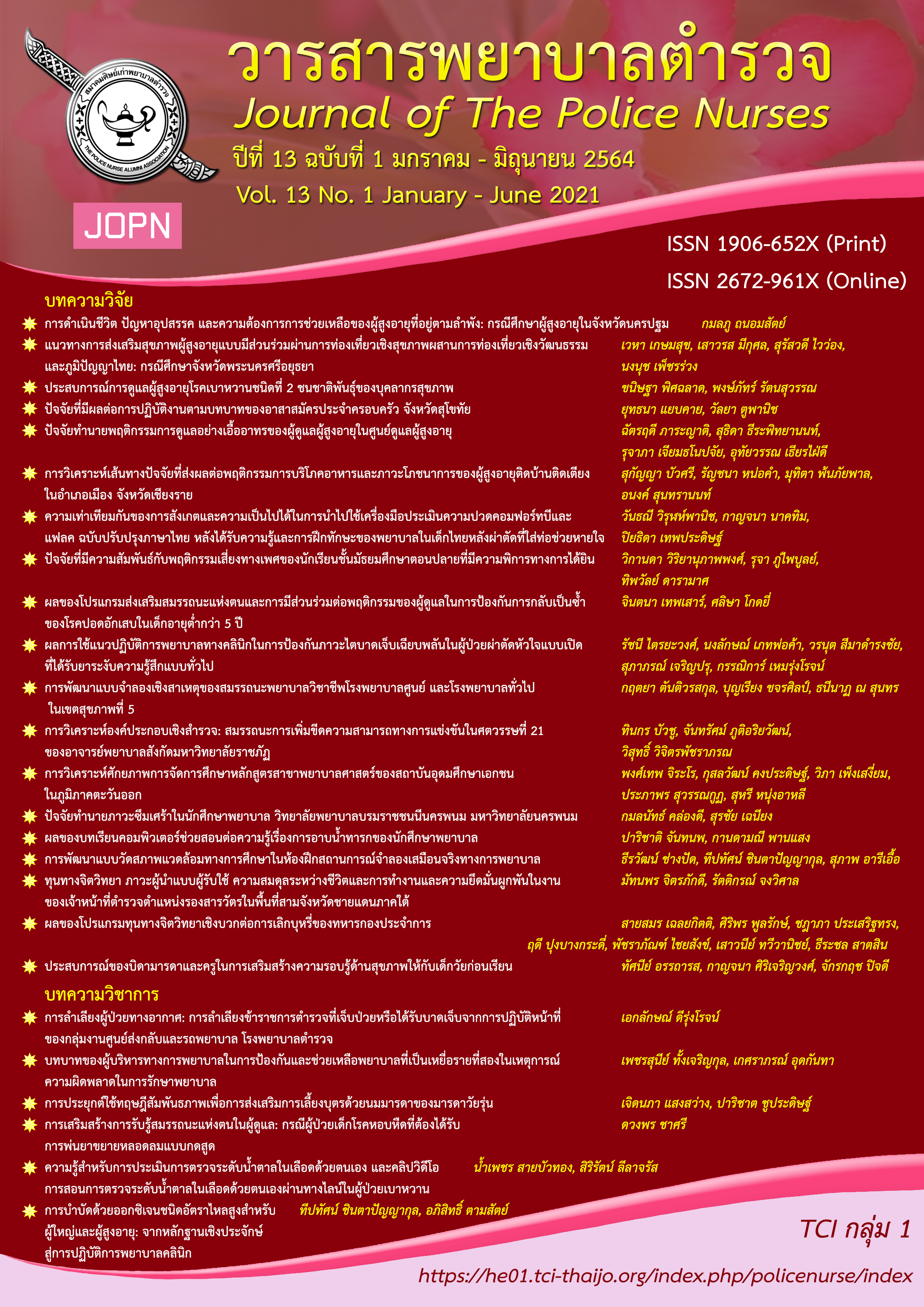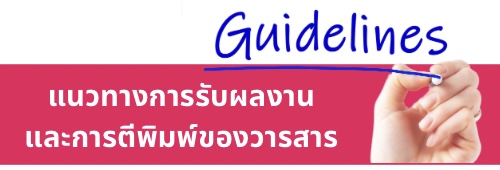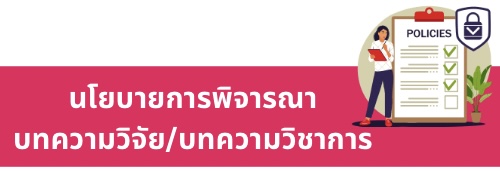การลำเลียงผู้ป่วยทางอากาศ: การลำเลียงข้าราชการตำรวจที่เจ็บป่วยหรือได้รับบาดเจ็บจากการปฏิบัติหน้าที่ของกลุ่มงานศูนย์ส่งกลับและรถพยาบาล โรงพยาบาลตำรวจ
คำสำคัญ:
การลำเลียงผู้ป่วยทางอากาศยาน, ข้าราชการตำรวจที่เจ็บป่วยหรือบาดเจ็บบทคัดย่อ
การลำเลียงผู้ป่วยทางอากาศเป็นการลำเลียงเพื่อส่งต่อผู้ป่วยโดยใช้อากาศยานทุกรูปแบบทั้งอากาศยานแบบปีกหมุน เช่น เฮลิคอปเตอร์ หรืออากาศยานแบบปีกตรึง ข้าราชการตำรวจที่ได้รับบาดเจ็บจากการปฏิบัติหน้าที่หรือเจ็บป่วยรุนแรง มีความจำเป็นต้องได้รับการรักษาอย่างเร่งด่วนและมีประสิทธิภาพ ในบางพื้นที่ที่มีความยากลำบากในการเข้าถึงและศักยภาพของหน่วยงานทางการแพทย์ที่อยู่ในพื้นที่ใกล้เคียงไม่สามารถเข้าไปช่วยเหลือได้ จำเป็นที่ต้องได้รับการลำเลียงทางอากาศเพื่อส่งต่อมารับการรักษาที่โรงพยาบาลที่มีศักยภาพ ดังนั้น บุคลากรทางการแพทย์ที่ช่วยลำเลียงผู้ป่วยบาดเจ็บจากการปฏิบัติหน้าที่หรือเจ็บป่วยฉุกเฉิน ต้องมีความรู้ ความเข้าใจในหลักการของการลำเลียงผู้ป่วยทางอากาศ ประกอบด้วย ความรู้ด้านสรีรวิทยาการบิน การประเมินอาการผู้ป่วยก่อนบิน การเตรียมบุคลากรและอุปกรณ์การแพทย์ที่เหมาะสมสำหรับการลำเลียงทางอากาศ เป็นต้น เพื่อให้สามารถประเมินผู้ป่วยในเบื้องต้นได้ว่ามีความพร้อมและสามารถที่จะลำเลียงทางอากาศได้ หากไม่สามารถลำเลียงทางอากาศได้ ต้องมีทีมแพทย์เวชศาสตร์การบินทำการประเมินและประสานเพื่อการลำเลียงทางด้านอื่น เพื่อให้ผู้ป่วยได้รับการส่งต่อถึงโรงพยาบาลปลายทางได้อย่างรวดเร็ว ปลอดภัย เป็นการลดระยะเวลาในการลำเลียง ช่วยลดอัตราการเสียชีวิตและการเกิดความพิการจากการบาดเจ็บหรือเจ็บป่วยฉุกเฉินได้
Downloads
เอกสารอ้างอิง
Department of the Air Force E-Publishing. (2015). Tactical doctrine critical care air transport team (CCATT). Retrieved from https://static.e-publishing.af.mil/production.1.af_sg/publication/afttp3-42.51/afttp3-42.51.pdf
Department of the Air Force E-Publishing. (2017). Flying operations aeromedical evacuation crew (AEC) checklist. Retrieved from https://static.e-publishing.af.mil/production/1/af_a3/publication/afi11-2aev3cl-1/afi11-2aev3_cl-1.pdf
Department of the Air Force E-Publishing. (2020). Aerospace medicine en route care and aeromedical evacuation medical operations. Retrieved from https://static.e-publishing.af.mil/production/1/af_sg/publication/dafi48-107v1/dafi48-107v1.pdf
Department of the Air Force E-Publishing. (2020). Medical care management. Retrieved from https://static.epublishing.af.mil/production/1/af_sg/publication/afi44-102/afi44-102.pdf
Jaidwatee, S. (2014). Pre-Flight assessment in patients with emergency medical conditions: Emergency aeromedical service guideline revision (2nd ed.) (pp. 77 – 98). Bangkok: NIEMS.
Kamtip, B., & Sutham, K. (2018). Northern Thai sky doctor: Emergency aeromedical service guideline revision health region 1 (pp.8-10). Chiangmai: NIEMS
National Institute for Emergency Medicine. (2019). Information service. Retrieved from https://www.niems.go.th/1/Ebook?group=55
National Institute for Emergency Medicine. (2019). Annual report. Retrieved from https://www.niems.go.th/1/Ebook/Detail/10123?group=23
Verayangkura, N. (2014). Aviation physiology for aeromedical transportation: Emergency aeromedical service guideline revision (2nd ed.) (pp. 49–62). Bangkok: NIEMS.
ดาวน์โหลด
เผยแพร่แล้ว
รูปแบบการอ้างอิง
ฉบับ
ประเภทบทความ
สัญญาอนุญาต
ผลงานที่ได้ตีพิมพ์แล้วจะเป็นลิขสิทธิ์ของวารสารพยาบาลตำรวจ















